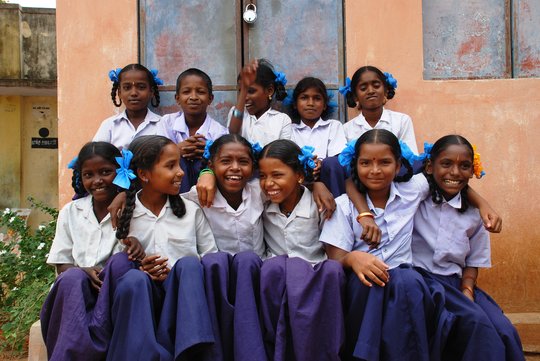
New Delhi: November 6, 2015
While only 73 per cent literacy has been achieved as per Census 2011, there has been marked improvement in female literacy. Male literacy at 80.9 per cent is still higher than female literacy at 64.6 per cent but the latter has increased by 10.9 percentage points compared to 5.6 percentage points for the former. The Right of Children to Free and Compulsory Education (RTE) Act 2009 was enacted by the centre to increase the quality as well as accessibility of elementary education in India in April 2010. Sarva Shiksha Abhiyan (SSA) is the designated scheme for implementation of the RTE Act.
The framework of the SSA has been revised to include reimbursement for expenditure incurred for at least 25 per cent admissions of children belonging to disadvantaged and weaker sections in private unaided schools from the academic year 2014- 15. Between 2007-08 and 2013-14, according to the DISE (District Information System for Education), total enrollment in primary schools increased from 134 million to 137 million in 2011- 12 and then declined to 132 million in 2013-14 while upper primary enrollment grew from 51 million to about 67 million. This is in line with the changing demographic age structure. India has achieved near universal enrollment and enhanced hard and soft infrastructure (schools, teachers, and academic support staff).
PISA, which measures the knowledge and skills of 15-year-olds with questions designed to assess their problem-solving capabilities, rates these two states at the bottom, with the scores in mathematics and science falling way behind the OECD (Organisation for Economic Cooperation and Development) average.
ASER (Annual Status of Education Report) findings have been reporting low levels of learning amongst the 5 to 16 age group in rural India since 2005. The worrying fact is that these are floor level tests (basic 2-digit carry-forward subtraction and division skills), without which one cannot progress in the school system. With the changing demography and declining child population, the inadequacy of human capital at the base of the pyramid leading to a huge backlog in basic skills could become a big impediment in India?s growth.
School Education Outcomes : ASER Report
Stagnant enrollment in rural India: Over one year the enrollment of 6-14-year old children in rural India remained dormant at 96.8 per cent, with the proportion not enrolled also unchanged at 3.3 per cent.
Rising private school enrollment: Private school enrollment of 6-14-year olds has risen marginally from 29.0 per cent in 2013 to 30.8 per cent in 2014. Among the major States which have higher private enrollment are Kerala followed by Haryana, UP, Punjab, and Rajasthan.
Decline in classroom-teacher ratio (CTR): The steady decline in the percentage of schools meeting the RTE norm for CTR continued; from 73.8 per cent in 2013 the ratio further declined to 72.8 per cent in 2014.
Decline in attendance: Children?s attendance in both primary and upper primary schools shows a steady downward trend. In 2009, attendance was at 74.3 per cent in primary schools and 77 per cent in upper primary schools as compared to 71.4 per cent and 71.1 per cent respectively in 2014.
Same classroom for different classes: In 2014, Standard II students in about 63 per cent of schools and Standard IV students in about 57 per cent of schools were reported to be sitting with one or more other classes; the percentages have been increasing over the years.







